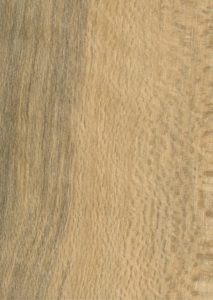CAPE HOLLY | Without |
Ilex Mitis
The Tree
The Cape Holly is a medium to large evergreen tree of between 8 and 20m tall, with a straight trunk and a rounded canopy. Stems are normally round. Bark on the young tree is a pale grey-brown with patches of white, smooth with fine, transverse ridges and yellow-brown corky specks. As the tree becomes older it becomes evenly whitish-grey with dark rough spots.
Evergreen tree, between 8m – 20m tall
Uniform pale white colour with almost no visible grain pattern
Saws and planes well. Uses: boat building, inlays, cabinetry, carving and turnery
The Wood
Ideal lumber has a very uniform, pale white color with virtually no visible grain pattern. Both heartwood and sapwood are white and not distinguishable. Knots are common, which can reduce the usable area of the wood. Holly is usually cut during the winter and kiln dried shortly thereafter to preserve the white color of the wood. Grain is interlocked and irregular. Medium to fine uniform texture with moderate natural luster.

Workability
Not the easiest to work on account of the numerous knots and interlocked grain, but saws and planes well. Glues, stains, and finishes well, and is sometimes stained black as a substitute for Ebony. Turns well on the lathe. Peels easily for decorative veneer and plywood.

Uses
The wood was once used in the construction of wagons for buckboards and occasionally for spokes. It was also in demand for the heels of ladies shoes. It is still used for implement handles, boat building, inlays, domestic flooring, panelling, cabinetry, piano keys (dyed black), decorative veneer, decorative boxes, carving and turnery.
